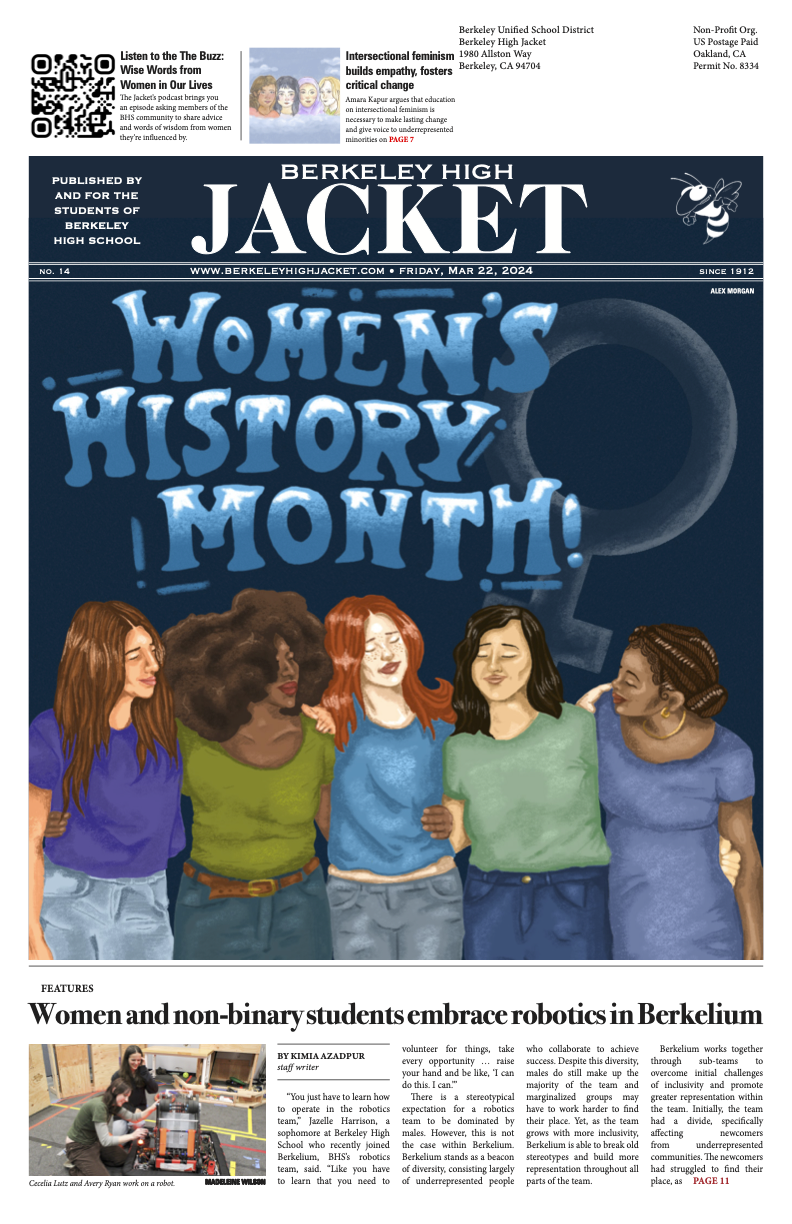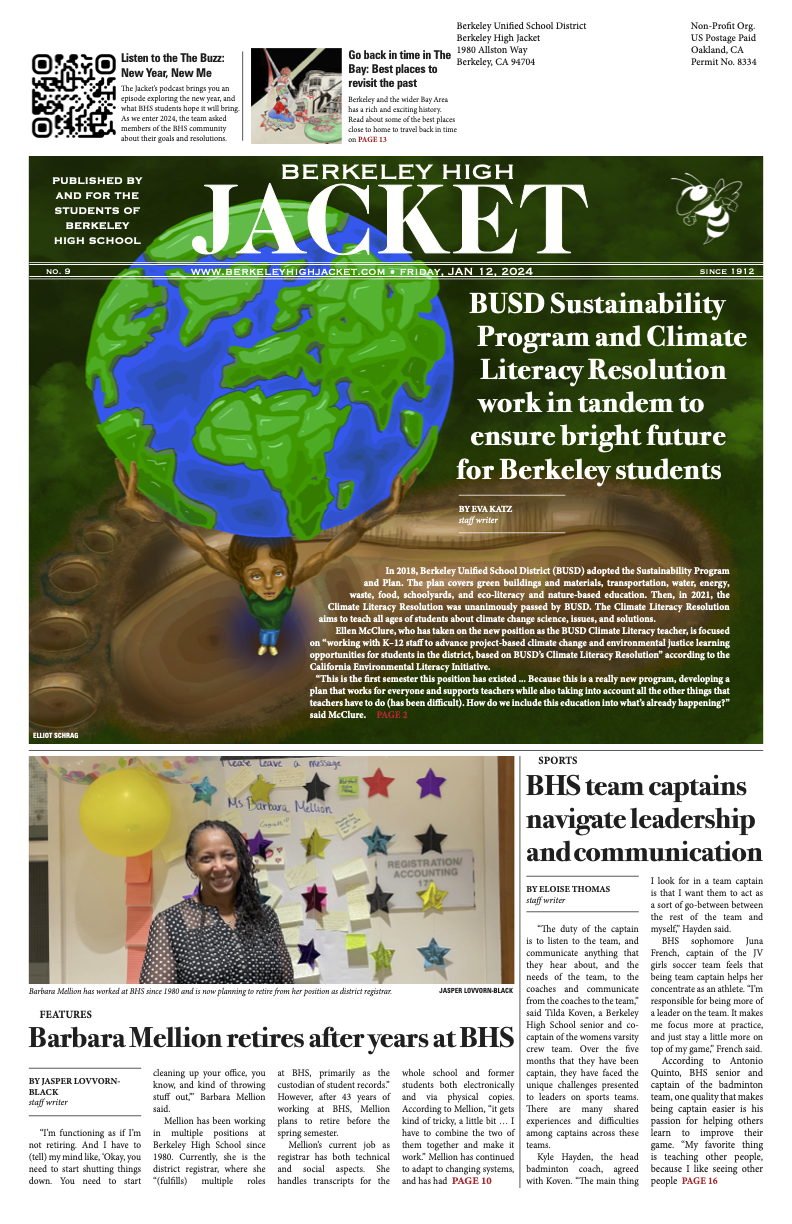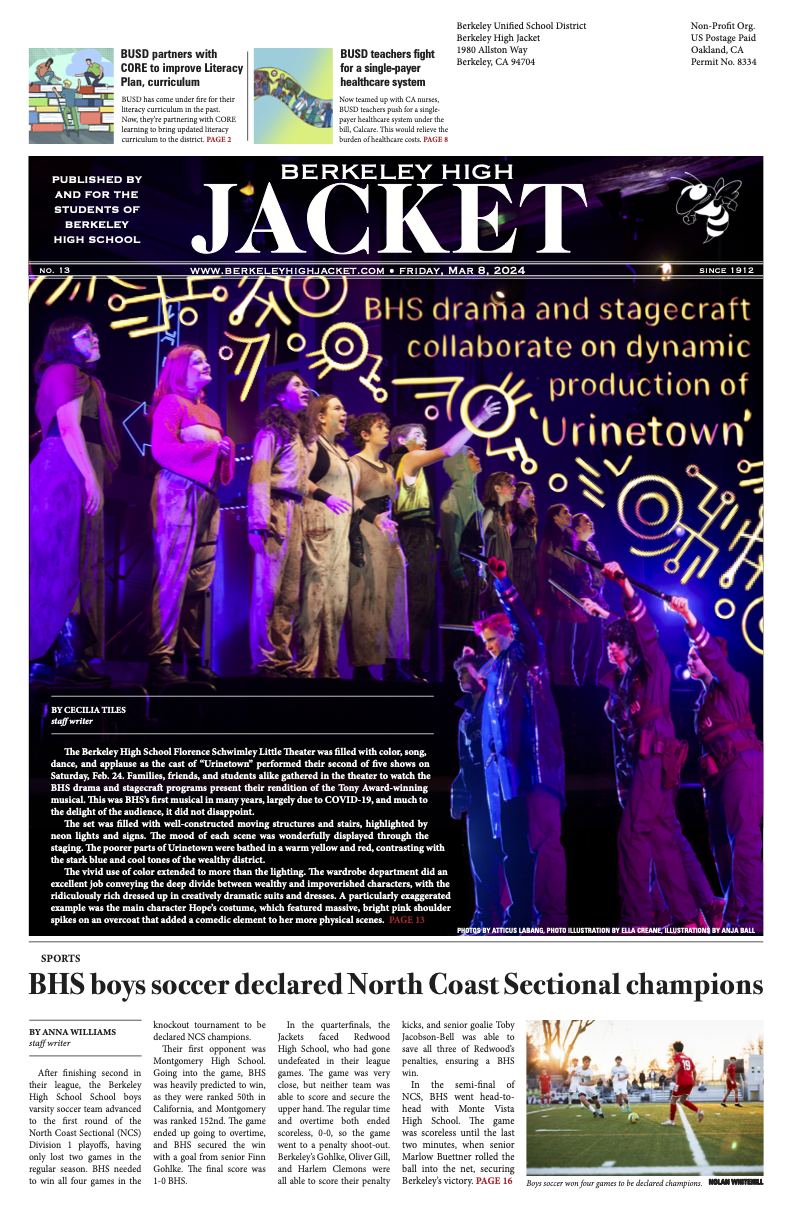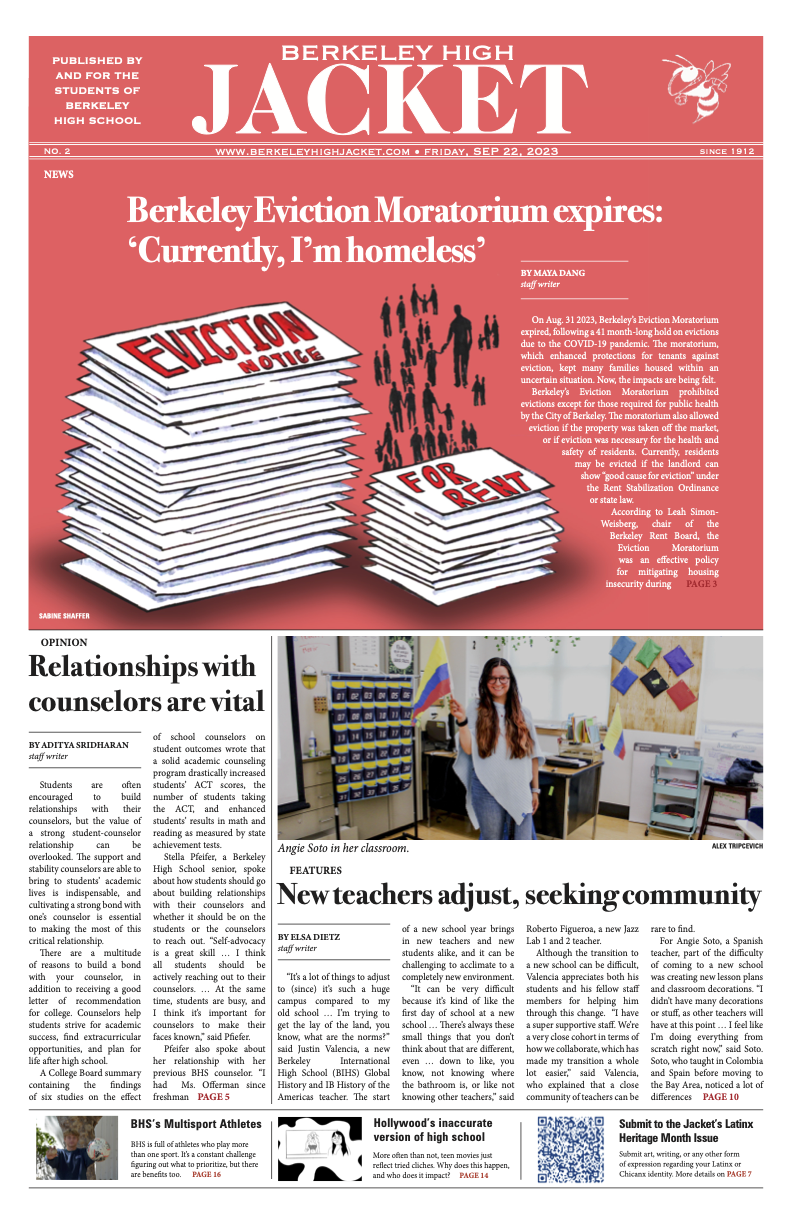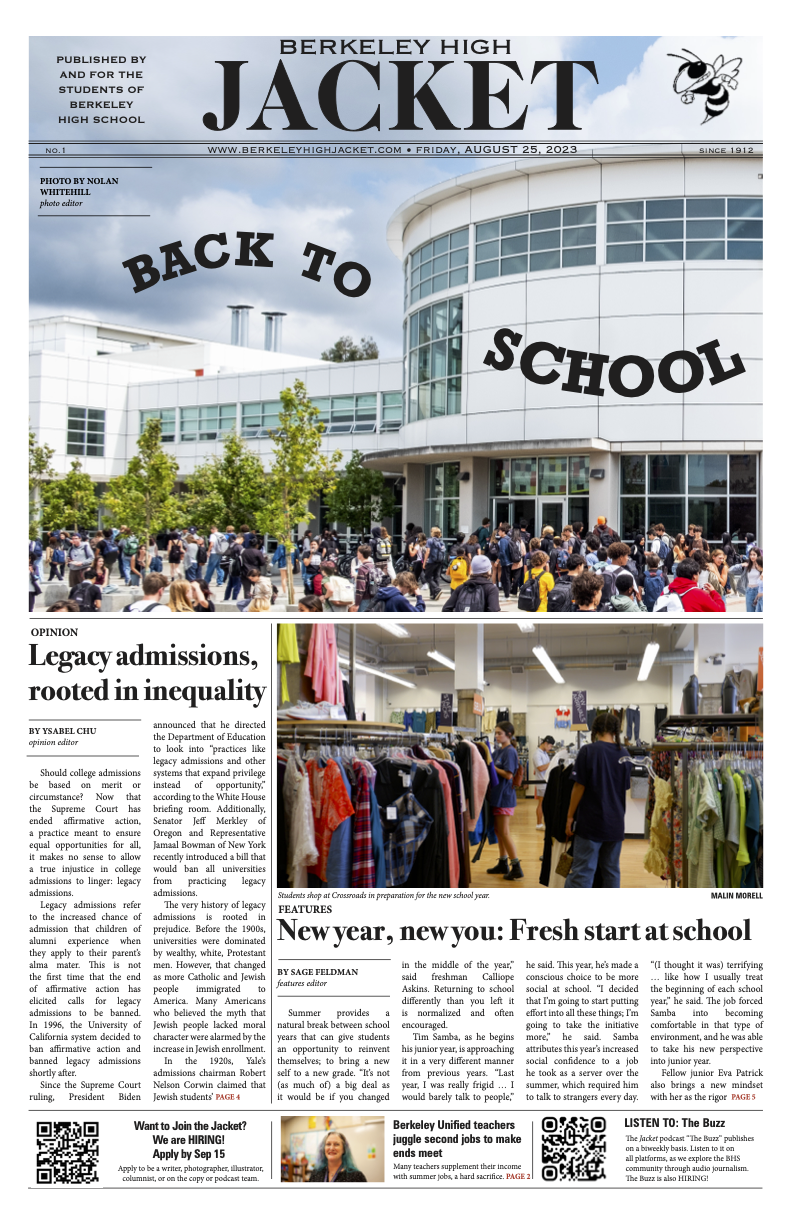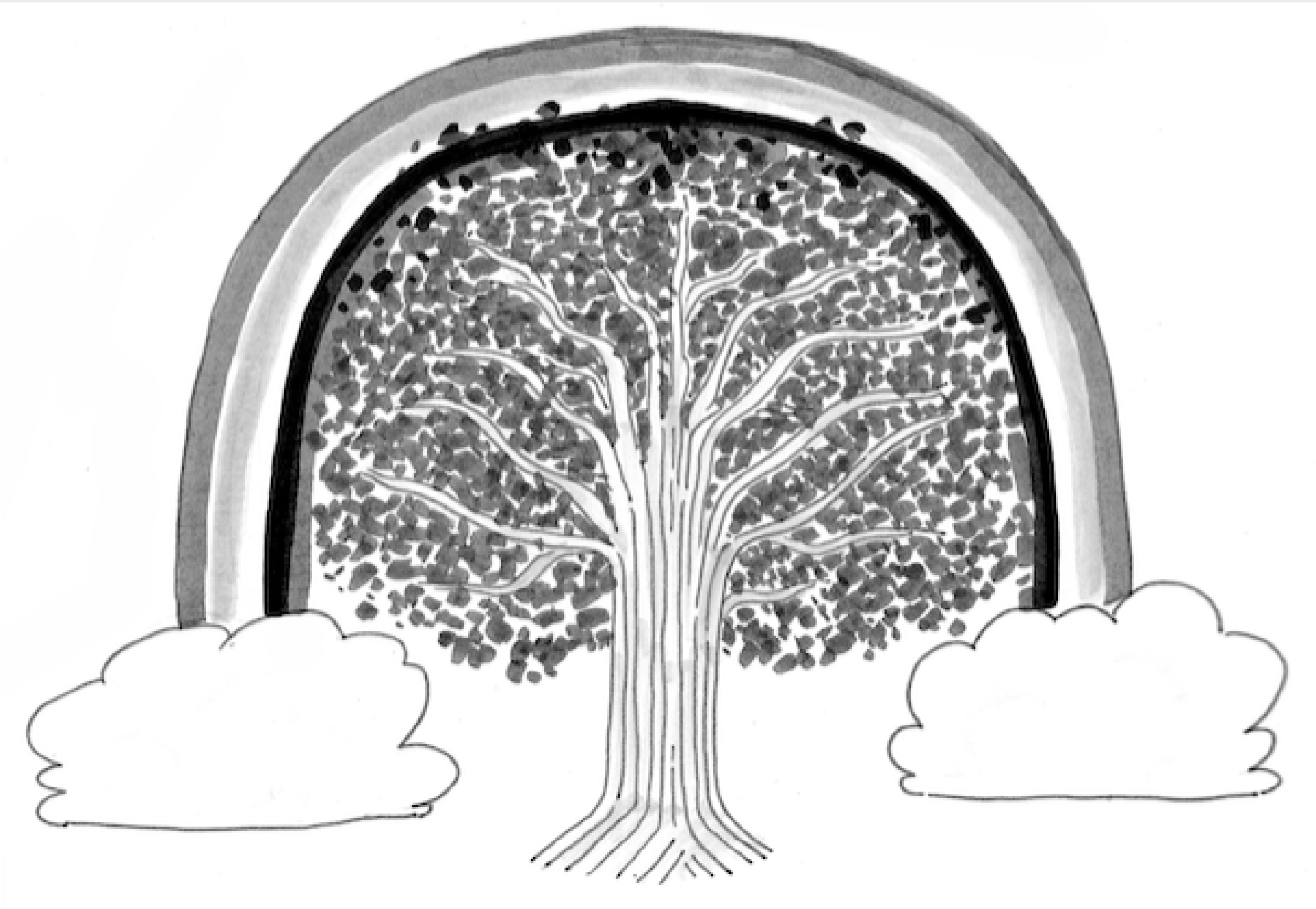Illustration by Maya San Diego
As many as 2,000 people of all races, genders, and sexual orientations showed up at Oakland City Hall on Sunday, September 9 for the Pride Parade and Festival. They gathered to celebrate the cultures and diversity of the LGBTQ+ community. The Pride Festival included performers such as Amara La Negra, a Florida-born genre-bending singer, and stand-up comedian Marga Gomez. It also featured a Family and Children Garden, complete with jumpy houses, pony rides, and book giveaways.
For many, it’s a way to present their gender and sexuality to the world. “Pride this year allowed me to truly not care of what others think of me and my rainbow nails,” said Ivan Garcia, the youth grand marshall of this year’s Pride. This sentiment is shared by Rachel Gelman, the program director for Jewish Youth for Community Action. In her words, Pride gives people “the opportunity to be out in the world and to be visible and to feel celebrated.”
However, according to Kai Levenson-Cupp, an Alameda Science and Technology Student, Pride was not always the celebration that it is today. According to Levenson-Cupp, the first Pride happened at a cafeteria in San Francisco called Compton Cafeteria. “Trans women, who were frequently arrested for ‘crossdressing’ at Compton’s Cafeteria, had had enough, and one threw a cup of coffee in the face of a police officer,” said Levinson-Cupp, and three days of riots ensued.
Gelman agreed with these ideas about the origins of Pride. “The first pride was out of that riot, fighting back against the police who were discriminating against them for being LGBTQ+. So, I think for me, that’s really what prides about, the ongoing struggle to demand respect and a place in our society,” said Gelman.
Levenson-Cupp agrees with this sentiment. “Modern queer activism has been born out of Pride; as long as Pride exists so will we [the LGBTQ+ comunity],” they said.
Although it stands as the second largest pride parade in Northern California, Oakland Pride has long been overshadowed by San Francisco Pride in terms of scale and attendance. In 2015, almost two million people lined the streets of San Francisco to watch hundreds of contingents parade past. So why is there a need for Oakland to have its own parade on a smaller scale?
Gelman explained how he felt the two parades were both different. “I feel that Oakland and San Francisco have really different queer now. San Francisco’s queer community is a lot more white, cis, gay men, and in Oakland there’s a lot more people of color and a lot more gender queer folks, and a lot more trans people who feel they have more of a place,” Gelman said.
That’s why Gelman and many others think that Oakland should have its own Pride parade in order to celebrate this unique and diverse queer community.
The Oakland Pride Parade was also overshadowed by another East Bay event on the same day, the Solano Stroll, which attracted as many as three hundred thousand attendees making it almost 150 times bigger than the parade.
Even the Rise for Climate Jobs and Justice March the day before attracted almost 15 times the amount of people, with almost 30 thousand going to San Francisco Civic Center.
Despite its comparatively small attendance, the Oakland Pride Parade is still an important event for many East Bay residents. People from outside the Bay and even from out of state came to participate in the event.
San Francisco Chronicle’s Datebook even enjoyed the parade enough to name it one of the best events of the summer.
“At Pride, we welcome everyone and encourage them to be themselves.” said Garcia. “Our impact is shown through thousands of people showing up every year.”
In addition to hosting the parade, the Oakland Pride Organization is working to create an Oakland LGBT Community Center.
